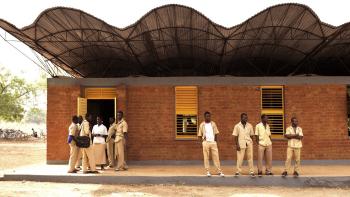Cable car systems, a low-pollution mode of transport, have been experiencing a revival of interest all over the world. Santo Domingo, with its 4 million inhabitants, is faced with an extraordinary surge in population. But the capital is struggling to integrate its poor suburbs and to manage persistent problems with traffic and pollution.
The local authorities are backing transport modernisation and developing an innovative and more sustainable offering in a bid to change the game. After the construction and extension of the metro, it is the turn of this overhead cable system, which will allow traffic to be freed up across the various bridges which provide a way to cross the Ozama river.
The cable, which is 5 km long, soars over densely-populated districts and has 4 stations, linking three townships in the east and north to Santo Domingo’s centre. The cable car system is ultra-modern: 195 cars, each with 10 seats, are accessible to people with disabilities and supplied with solar panels to limit energy consumption.
Inaugurated by the president, Danilo Medina, on 22 May 2018, it is available free of charge for the public to use at specified times until the end of June, and will become fully operational from 1 July 2018. It is already a resounding success.
An integrated transport system to link the inhabitants to the city
The cable car service, which can carry 3,000 passengers an hour in each direction (that is, 54,000 passengers each day), will be a life changer for the 250,000 inhabitants of these vulnerable districts. The population will see an end to the hours lost in traffic jams, and easier access to employment, which is mainly located in the city centre. This overhead cable service is being integrated into the developing unified public transport network: there will be connections into the metro through a station on line 2 (using the same ticket) and with the bus network of national company OMSA.
French technology supporting the sustainable city
The cable car system, financed in part by a loan from AFD, was built by French construction company Poma in a consortium with a Dominican civil engineering group, with the Unit for the regeneration of La Barquita and its vicinity (URBE) as prime contractor, at a total cost of around 61 million euros.
The construction of the cable car system forms part of a larger land use planning project in East Santo Domingo, which is also financed by AFD through a loan of 210 million dollars, to which it committed in 2014. This is an extensive programme, which also includes the re-housing of the inhabitants of the impoverished district of La Barquita and the extension of metro line 2. With it will come improved living conditions for local communities, which will at last be integrated into their socio-economic environment.














